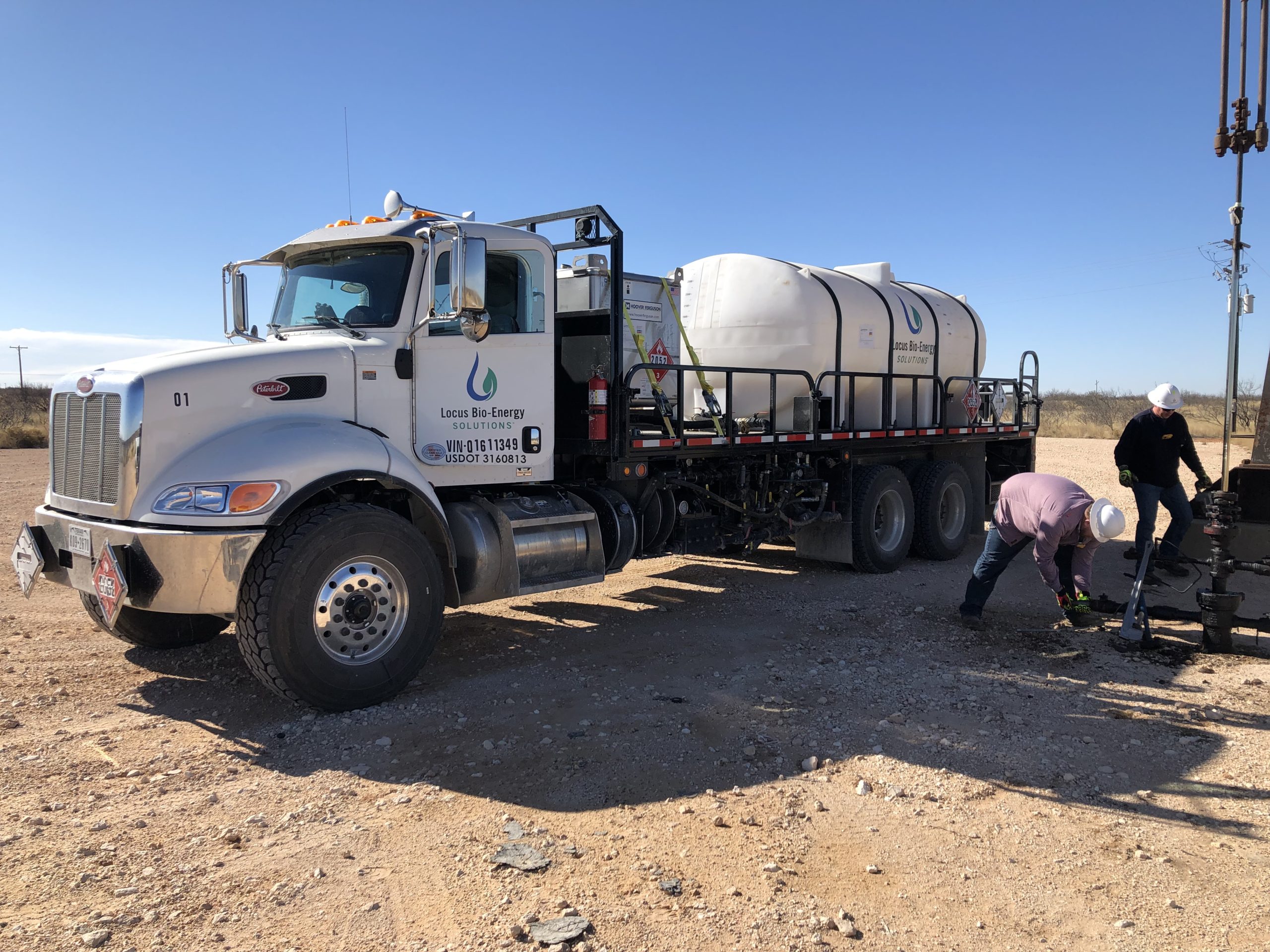Oil & Gas 360 Publisher’s Note: Locus Bio-Energy Solutions will be presenting on Monday, August 17, 2020 at 3.30pm Mountain Time during the Energy Innovation Capital Accelerator Session at the 25th Anniversary of EnerCom’s The Oil and Gas Conference.
Interested investors and attendees are encouraged to register for The Oil and Gas Conference HERE and schedule a 1×1 meeting with Locus Bio-Energy’s senior management team and learn more about their bio-surfactant solution and available 10-year, Texas tax credit for using Locus Bio-Energy’s green EOR technology.
Locus Bio-Energy Solutions (Locus BE) has patented technology that brings green biosurfactant treatments to the oilfield proven to outperform synthetic chemicals at a fraction of the dosage rates and cost. The environmentally friendly solutions have been nationally recognized for their ability to maximize ESG and profitability, solve top pain points and help operators do more with less. They are the only green treatments approved as a tertiary EOR technology, qualifying users for millions of dollars annually in state tax incentives. Their unmatched success in boosting oil production and minimizing new drilling are driving sustainability and financial security across the industry.

Source: Locus Bio-Energy Solutions
Oil & Gas in 2020: The Road to Financial Recovery
Meet the green technology helping operators make a significant comeback
The Problem
From declining employment and low oil prices to pressure from shareholders, limited cashflow and ESG concerns, 2020 has given the oil industry its share of financial challenges to overcome. Operators are doing what they can to survive, but with less CAPEX and resources available what can be done to minimize operating costs, increase revenue and remain competitive?
Drilling and completions activities are slowing down, meaning more oil needs to be extracted from existing wells as efficiently and inexpensively as possible. To do so, many operators are turning their focus towards new technologies. The shift has led to interest in an award-winning green solution that’s outperforming chemical surfactants and qualifying users for millions of dollars in tax credits.
Improving ROI with Green Technology
Enter biosurfactants—a special class of surfactants that are 100% sustainable and biodegradable with lower toxicity. Biosurfactant formulations are highly effective in paraffin dispersion, completions chemistries and for enhanced oil recovery applications—making them one of the most promising opportunities in oilfield chemistry. Historically, technology and production limitations restricted the commercial use of biosurfactants to just the pharmaceutical and high-end consumer markets. Now, recent technology advancements, such as those patented by Locus Bio-Energy Solutions, have enabled manufacturing at costs and volumes needed for widespread oilfield use.
Biosurfactants are now successfully replacing standard synthetic petrochemical-based surfactants at a fraction of the cost by reducing dosage rates, improving oil production, minimizing the need for new drilling and qualifying for tax incentives—acting as a minimal CAPEX method to improve top and bottom lines.
Multifunctional Treatments
The advantages of biosurfactants come from their many mechanisms of action, including reducing crude oil viscosity, dispersing organic blockages and changing interfacial tensions and oil/water contact angles. Biosurfactants are highly effective as excellent wetting agents and have low critical micelle concentrations (minimum effective dosage rates), which reduce surface and interfacial tensions to extremely low levels. They have been shown to reduce surface tension of water to below 35 mN/m, at doses 1/50th of chemical surfactants, and are fast-acting—offering sustained performance.
The multifunctionality of biosurfactants can help operators recover in four key areas:
- Recover Oil: The above biosurfactant mechanisms increase effective permeability, improve flow assurance and mobilize oil that would not be produced in the primary production phase, ultimately increasing production. Conventional tight sand reservoirs and unconventional shale wells treated in the Permian and Appalachian basins have shown sustained oil production increases of more than 45% in 90% of the treated wells.
- Recover Treatment Costs: Biosurfactants require as little as 1/50th the dosage rate of traditional surfactants and have unique absorption and desorption qualities that extend their performance over time when used in new completions, recompletions or enhanced oil recovery treatments of existing wells. By using biosurfactants as a replacement or supplement to current chemistries, dosage rates and frequency can be significantly reduced—lowering total expenditures.
- Recover Well Performance: Biosurfactant–based formulations outperform xylene and other commercial paraffin dispersants in successfully reducing paraffin accumulation downhole and in flow lines—eliminating or minimizing the use of BTEX solvents and other synthetic chemicals. In addition, treatments alter near the wellbore wettability and increase effective permeability of the oil-bearing reservoirs to increase oil production. The combination of these effects maximizes well performance and extends the lifespan.
- Recover Taxes: Certain biosurfactant treatments qualify for state tax credits, giving operators a new way to cut costs. AssurEOR, a biosurfactant treatment program developed by Locus Bio-Energy Solutions, is approved as a tertiary EOR technology by the Texas Railroad Commission (RRC), meaning operators receive a 50% severance tax reduction for 10 years on ALL oil (not just incremental oil) produced, if a sustained production response is realized. At current oil prices, the tax credit can save operators millions to tens of millions of dollars annually.
Doing More With Less
2020 has turned the oil industry’s focus to minimizing the total cost of operations, along with challenges surrounding growing demands for oil production and greater recovery from existing wells. Biosurfactants offer the first green solution that exceeds traditional chemical surfactants in performance, cost and sustainability—allowing operators to increase production revenue and financial stability while also excelling in ESG compliance for a quicker and easier road to recovery.

